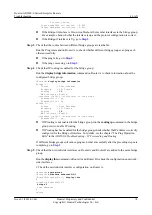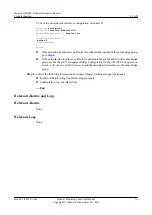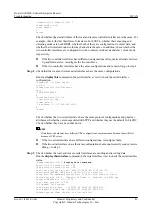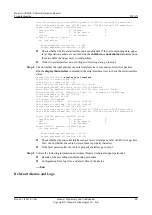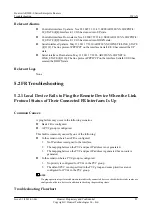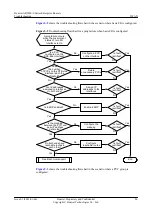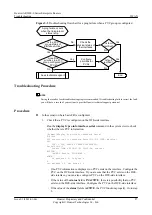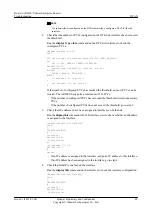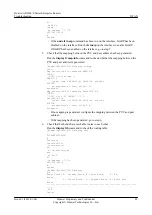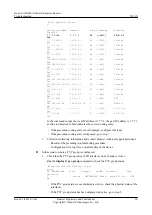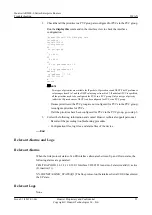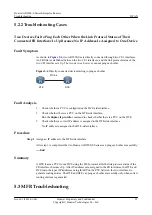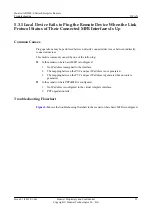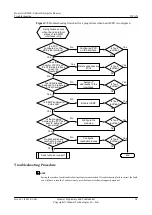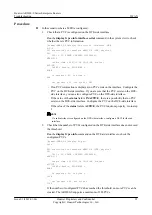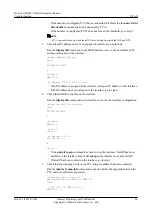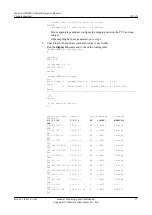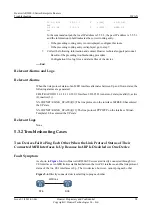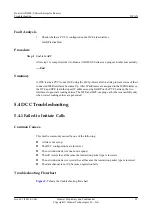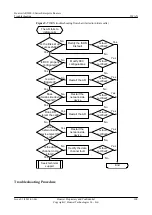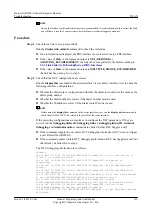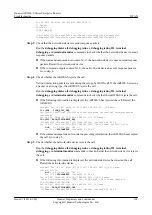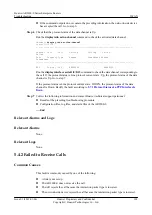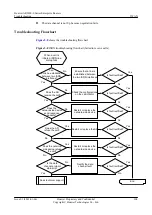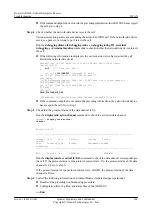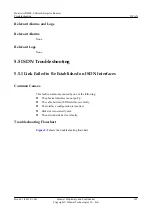
5.2.2 Troubleshooting Cases
Two Devices Fail to Ping Each Other When the Link Protocol Status of Their
Connected FR Interfaces Is Up Because No IP Address Is Assigned to One Device
Fault Symptom
, two AR2200-Ss are directly connected through two CE1 interfaces.
An FR link is established between the two CE1 interfaces, and the link protocol status of the
two CE1 interfaces is Up. The two devices, however, cannot ping each other.
Figure 5-4
Directly connected devices failing to ping each other
DTE
DCE
FR link
Fault Analysis
1.
Check whether a PVC is configured on the DCE-side interface.
2.
Check whether there is a PVC on the DTE-side interface.
Run the
display fr pvc-info
command to check whether there is a PVC on the DTE.
3.
Check whether a correct IP address is assigned to the DTE-side interface.
No IP address is assigned to the DTE-side interface.
Procedure
Step 1
Assign an IP address to the DTE-side interface.
After step 1 is completed, the two Huawei AR2200-S Seriess can ping each other successfully.
----End
Summary
A DTE learns a PVC from a DCE using the LMI protocol after the link protocol status of the
FR interfaces becomes Up. After IP addresses are assigned to the FR interfaces, the DTE and
DCE learn their peer IP addresses using InARP on the PVC between the two interfaces to
generate routing entries. The DTE and DCE can ping each other successfully only when correct
routing entries are generated.
5.3 MFR Troubleshooting
Huawei AR2200-S Series Enterprise Routers
Troubleshooting
5 WAN
Issue 01 (2012-01-06)
Huawei Proprietary and Confidential
Copyright © Huawei Technologies Co., Ltd.
92

